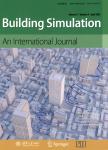On-site solar PV generation and use: Self-consumption andself-sufficiency
作者机构:School of Architecture and Built EnvironmentDeakin UniversityGeelongAustralia
出 版 物:《Building Simulation》 (建筑模拟(英文))
年 卷 期:2023年第16卷第10期
页 面:1835-1849页
核心收录:
学科分类:08[工学] 0807[工学-动力工程及工程热物理] 0813[工学-建筑学] 0802[工学-机械工程] 0833[工学-城乡规划学] 0801[工学-力学(可授工学、理学学位)]
基 金:CAUL and its Member Institutions
主 题:solar photovoltaic polyvalent heat pump energy storage self-consumption self-sufficiency
摘 要:As energy storage systems are typically not installed with residential solar photovoltaic (PV) systems,any “excess solar energy exceeding the house load remains unharvested or is exported to the *** paper introduces an approach towards a system design for improved PV self-consumptionand self-sufficiency. As a result, a polyvalent heat pump, offering heating, cooling and domestic hotwater, is considered alongside water storage tanks and batteries. Our method of system analysisbegins with annual hourly thermal loads for heating and cooling a typical Australian house inGeelong, Victoria. These hourly heating and cooling loads are determined using Transient SystemSimulation (TRNSYS) software. The house’s annual hourly electricity consumption is analysed usingsmart meter data downloaded from the power supplier and PV generation data measured with aPV system controller. The results reveal that the proposed system could increase PV self-consumptionand self-sufficiency to 41.96% and 86.34%, respectively, resulting in the annual imported energybeing reduced by about 74%. The paper also provides sensitivity analyses for the hot and coldstorage tank sizes, the coefficient of performance of the heat pump, solar PV and battery *** establishing the limits of thermal storage size, a significant impact on self-efficiency can berealised through battery storage. This study demonstrates the feasibility of using a polyvalent heatpump together with water storage tanks and, ultimately, batteries to increase PV self-consumptionand self-sufficiency. Future work will concentrate on determining a best-fit approach to systemsizing embedded within the TRNSYS simulation tool.



